What is an Edgeless Pickleball Paddle?
Edgeless pickleball paddles are distinguished by their lack of a traditional protective edge guard that you typically find on standard paddles. This design means that the paddle's face extends seamlessly to its sides, creating a larger effective hitting area. With approximately 5-8% more effective surface compared to conventional paddles, players are equipped for better contact and improved accuracy. The absence of an edge guard allows for a smoother ball contact, reducing mishits and maximizing the sweet spot. As such, players can capitalize on cleaner aerodynamics, which facilitates quicker swing speeds and offers improved maneuverability on the court.
The Rise of Edgeless Paddles
The popularity of edgeless paddles has surged in recent years, and it’s easy to see why. In a sport that prizes precision and strategic play, gadgets that can provide increased performance and flexibility are always in demand.
- Initial enthusiasm surrounding edgeless paddles was driven by competitive players looking for every advantage.
- As various brands developed new technologies, the edgeless design was embraced not only by enthusiasts but also by serious competitors in tournaments.
- It's speculated that edgeless paddles may soon become the gold standard in pickleball, paralleling a trend seen in other racquet sports where traditional designs are frequently challenged by innovative alternatives.
The transition from traditional paddles to edgeless options showcases a rebellion against conventions; players are more discerning than ever, focusing on optimizing their play capabilities. The paddle’s unrestricted design enables a free-flowing game that's expressive and agile, opening a pathway for both experienced players and newcomers alike to elevate their skills. With prominent edgeless paddle options hitting the market from esteemed manufacturers, this evolution has no indications of slowing.
Advantages for Hard Court Players
For those who often play on hard courts, edgeless paddles present several advantages:
- Enhanced Maneuverability: Edgeless paddles typically feature lighter constructions, making them more agile. This weight reduction translates into quicker reactions and a heightened ability to adapt to fast-paced exchanges, particularly vital on hard courts where the ball can come at players swiftly.
- Improved Shot Accuracy: The larger effective hitting surface means players can strike the ball with greater precision. This design massively reduces the risk of errant shots, providing players confidence as they aim for their targeted placements.
- Better Feel: Many players appreciate the direct connection between the ball and paddle face that edgeless designs enable. The absence of an edge guard minimizes vibrations on impact, leading to a more satisfying hit, especially when executing delicate shots that demand nuanced control.
- Reduced Ball Catch: With no edge guard, balls are less likely to catch or spin awkwardly off the paddle, creating a smoother and more controlled shot trajectory.
These advantages become fundamental considerations for players who regularly contend on hard activities, enhancing the overall gameplay experience and performance metrics.
Key Benefits Overview
Edgeless pickleball paddles stand out due to several compelling benefits that cater to players looking to up their game:
- Larger Sweet Spot: An edgeless design typically translates to a more expanded sweet spot, allowing for consistent hits even when hitting off-center. This expansion benefits players of all skill levels, enabling improved shot accuracy and reduced chance of mishits.
- Weight and Feel: Many edgeless paddles are designed with lightweight materials, providing the agility needed for quick court movement. This quality allows players to swing effortlessly without compromising power.
- Aerodynamics: The streamlined structure of edgeless paddles facilitates greater swing speeds, which players can harness during rallies. With less drag, players find that their paddles cut through air smoothly, contributing to quicker reactions.
- Visual Appeal: Many players find the modern aesthetic of edgeless paddles stands out on the court. The sleek, uninterrupted surface provides a visually striking design without an impractical edge, captivating onlookers.
- Durability in Performance: Although traditionally thought less durable than paddles with edge guards, edgeless designs are often built with premium materials that can withstand the rigors of competitive play. Their construction is geared toward longevity despite the lack of edge reinforcement.
With these advantages in mind, it becomes clear why edgeless paddles are rising in popularity among various player categories, extending beyond competitive ranks to everyday players looking to enhance their skills.
Why Choose an Edgeless Pickleball Paddle?
Adopting an edgeless pickleball paddle can elevate your overall performance. As previously mentioned, these paddles create ample benefits for players who prioritize accuracy and maneuverability. However, a deeper look reveals additional reasons why an edgeless paddle may become your equipment of choice.
- Enhanced Control and Shot Precision: Players who strive for accuracy will find that edgeless paddles enable greater ball feedback. The direct surface connection allows for optimal control, especially for soft shots or drop shots where finesse is key.
- Short Term Adjustability: Transitioning from traditional paddles to edgeless varieties often means a learning curve; yet, players find that the broader hitting area allows for easier adaptation and modification of techniques over time.
- Durability: Recent advancements in materials have made edgeless paddles increasingly durable, offering resilience against wear and tear. Players can enjoy longevity from their paddles, minimizing the frequent need for replacements.
- Effective Use in Outdoor Environments: If you frequently transition your game to outdoor settings, the lack of an edge guard can reduce unintended tangles and mishits, ensuring a smoother experience across varying surfaces.
- Personalized Experience: Players often have preferences that hinge on feel; between different grip sizes, weights, and designs, edgeless paddles allow for extensive customization, matching your unique playing style precisely.
This exploration into edgeless paddles reveals that their hidden potentials extend well beyond conventional metrics, offering a blend of adaptability and user-focused design features that can enhance play quality significantly.
Potential Drawbacks of Edgeless Pickleball Paddles
While there are many advantages linked to edgeless pickleball paddles, it is essential to acknowledge potential drawbacks, ensuring players weigh their options judiciously:
- Higher Risk of Damage: By lacking an edge guard, edgeless paddles might suffer from cosmetic damage more easily. Players may notice scratches, chips, or dings following gameplay, potentially impacting performance longevity.
- Reduced Shock Absorption: While advancements in materials enhance construction quality, some edgeless paddles can deliver less shock absorption, especially during powerful hits. Players may perceive increased vibrations through the handle upon contact with the ball, which could lead to discomfort.
- Challenging Outdoor Play: For outdoor players, the increased likelihood of edge impact on hard surfaces poses a concern. A mis-hit or drop could lead to more damage compared to traditional paddles with protective edges, demanding more cautious practice.
- Potential for Scratches and Chips: On hard surfaces, edge impacts can lead to aesthetic issues, which might deter detailed preferences among some players. The sleek design, while appealing, may require diligent upkeep.
- Generally Higher Price: Quality edgeless paddles often come at a premium price point, making them a larger financial investment. Players should assess their budget to determine if they can comfortably afford a high-quality model.
Taking time to ponder these drawbacks can help players make informed decisions, ensuring they choose the right paddle tailored to their style and competitive environment.
Key Factors to Consider When Buying an Edgeless Pickleball Paddle
After considering potential drawbacks, it’s equally essential to keep in mind various factors to enhance your buying journey as you search for an edgeless paddle:
Durability of Materials
Selecting an edgeless paddle made from durable materials is crucial for long-lasting performance. Players should look for paddles made with premium composites, such as graphite or carbon fiber.
- Graphite: Known for its lightweight travel, graphite paddles provide responsive play and high maneuverability while retaining power with each shot.
- Composite Blends: Blending materials often offers a balanced play experience, providing a sweet spot between power and control.
There’s a strong correlation between the chosen materials and overall performance; therefore, take special attention to construction quality when investing in an edgeless paddle.
Paddle Weight
Paddle weight can impact swing speed, control, and overall gameplay. Edgeless paddles generally classify into three categories:
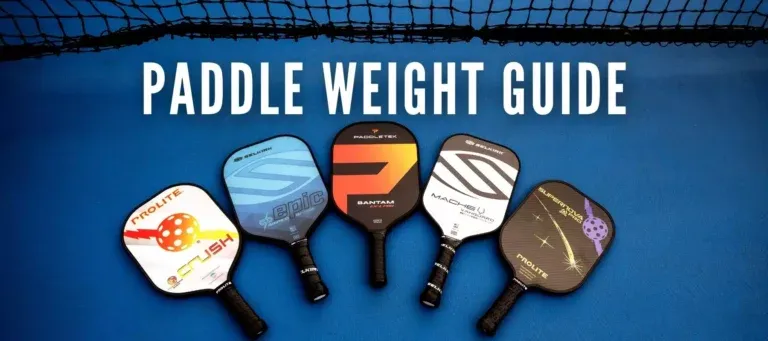
- Lightweight (under 7.3 ounces): Ideal for quick movements and agility but might lack power.
- Midweight (7.3 to 8.3 ounces): These offer a balance of maneuverability and power, appealing to various styles.
- Heavyweight (over 8.3 ounces): Both powerful and demanding, these paddles may tire hands quickly but excel for aggressive play.
Understanding personal preferences regarding weight can greatly influence your successful paddle choice.
Balance
Balance refers to the weight distribution within the paddle, which can have dramatic effects on playstyle. Edgeless paddles come in three balance options:
- Head-Heavy: These paddles generate momentum and higher power on hitting but may sacrifice sensitivity on softer shots.
- Even-Balanced: Suitable for versatile playing styles, ensuring manageable swings without sacrificing precision.
- Handle-Heavy: Perfect for players who prioritize control over power, offering enhanced grip for delicate shots.
Choosing balance wisely can significantly affect performance in the game.
Paddle Face Material
The material of the paddle face influences durability, responsiveness, and potential for spin. The most common materials are:
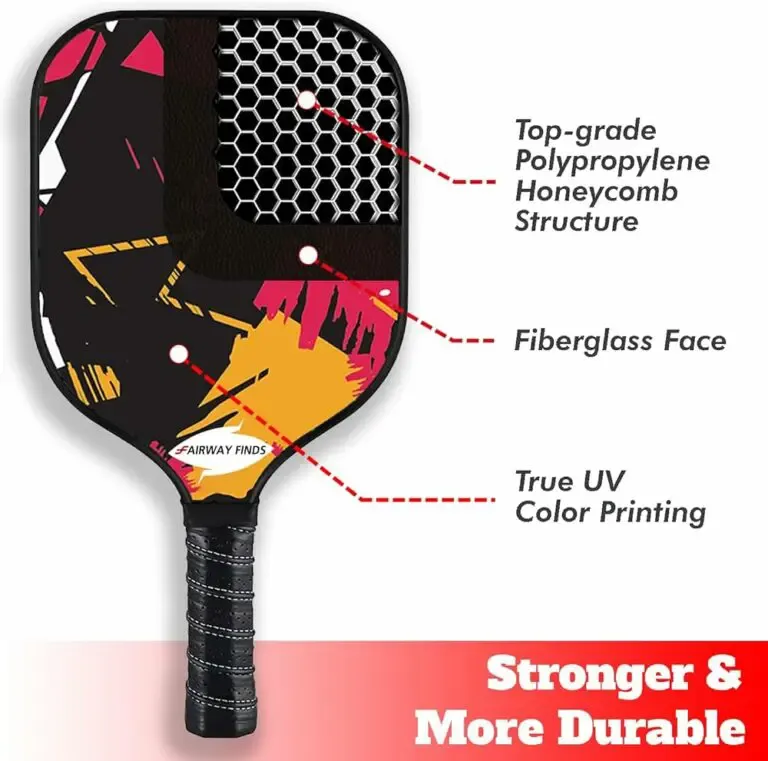
- Carbon Fiber: Lightweight with high stiffness, these paddles generally enhance shot power and spin potential.
- Fiberglass: While slightly heavier, fiberglass often enhances touch and feel, providing players comprehensive control during gameplay.
Each material has its unique attributes, allowing players to find the right fit according to their playing preferences.
Grip Size and Handle Length
Grip size enables precise control over the paddle. Finding the right size typically ranging from small to large is essential to avoid slippage during play.
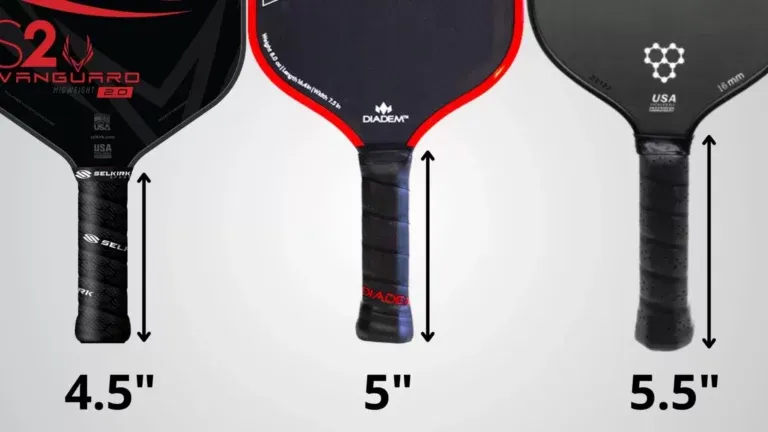
- A good grip feels comfortable and secure, providing maximum control.
- Handle length likewise influences play style; longer handles assist players who often use two-handed shots or need additional leverage.
Assessing these dimensions ensures you'll have a comfortable grip while maximizing paddle control.
Paddle Shape
The absence of an edge guard allows for various paddle shapes, leading to possible benefits including:
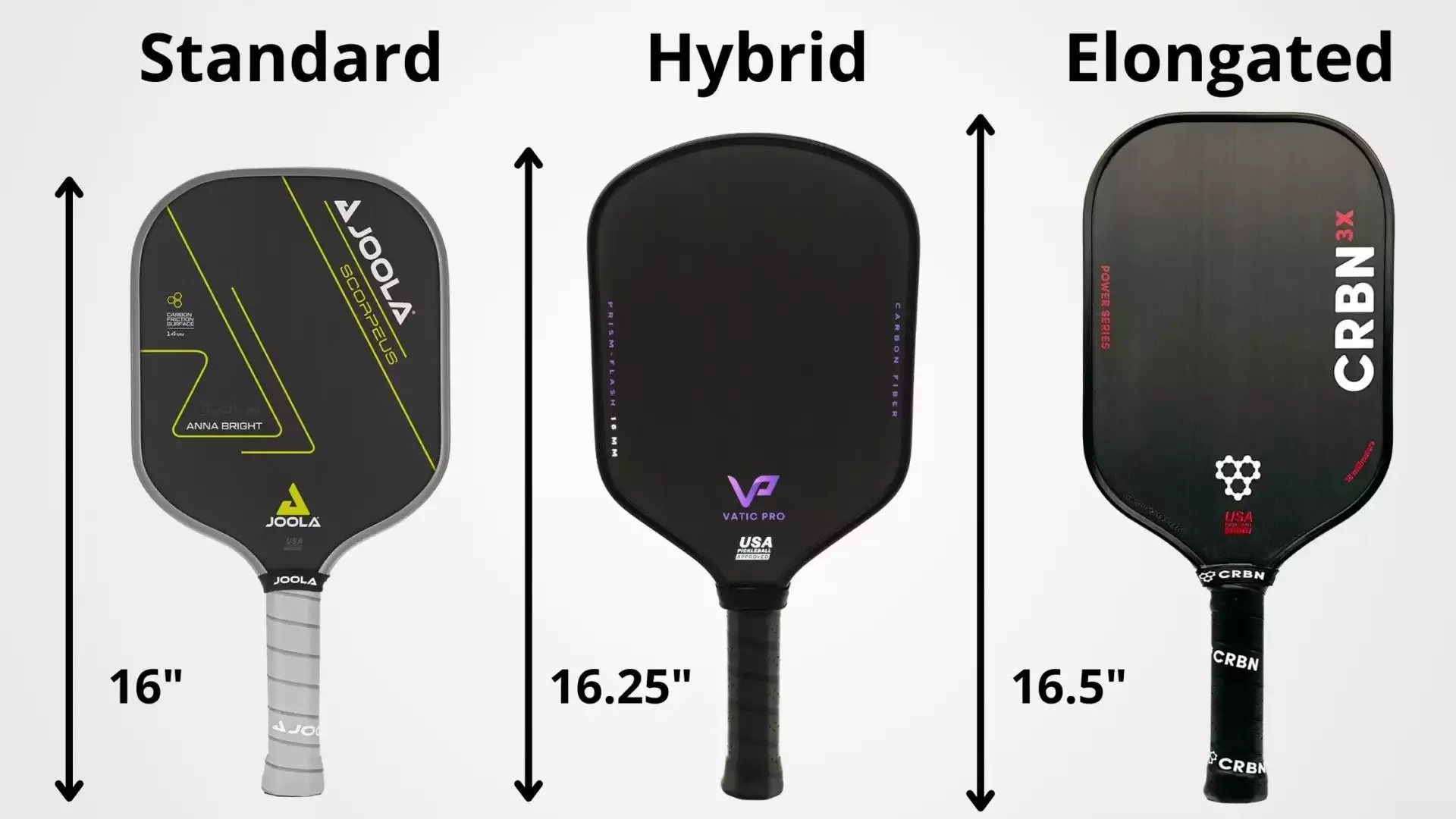
- Enhanced maneuverability through thin, streamlined paddles.
- An elongated design provides extra reach during play, ideal for defensive tactics.
- A wider body often yields a larger surface area for hitting, great for precision plays.
Evaluating how paddle shape aligns with your style can enhance your gameplay experience.
Core Material and Thickness
The core significantly influences performance metrics on the court. Common core materials include:
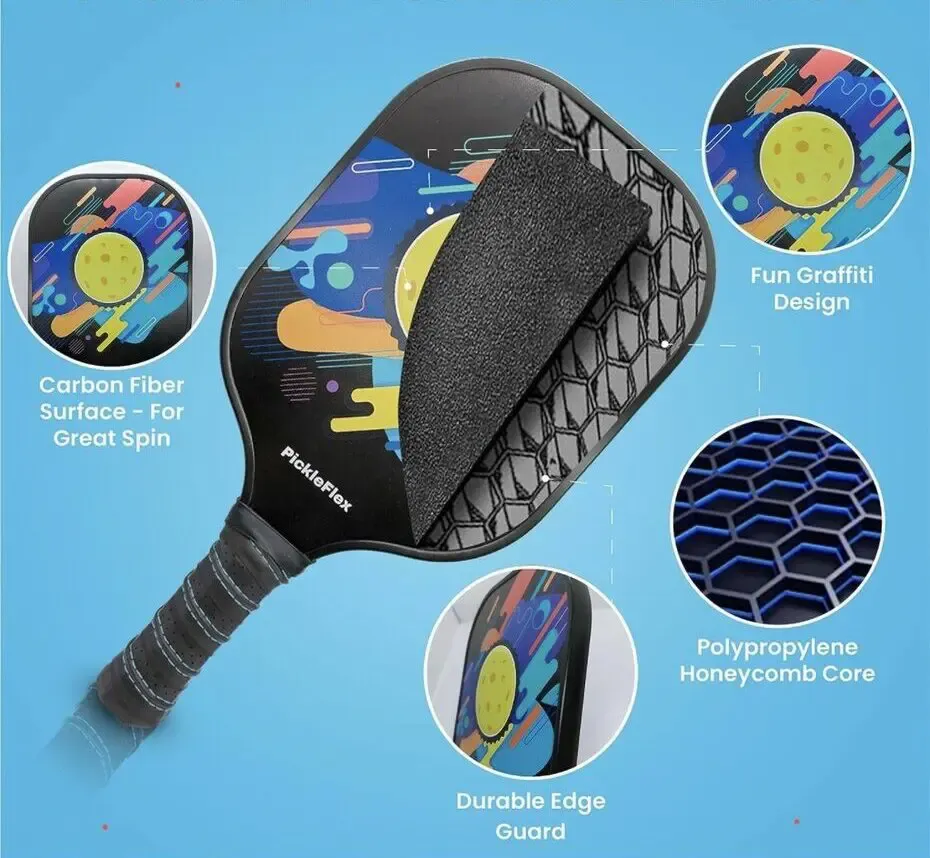
- Polymer: Great for shock absorption and a softer feel, polymer cores suit players who prioritize comfort.
- Nomex: Known for durability and responsiveness, Nomex leads to a crisper feel while maintaining paddle lifespan.
The thickness of the core ranging from 14mm to 16mm affects control as well. A thicker core enhances stability, while a thinner option often prioritizes quicker response times.
Spin Potential
A crucial aspect of gameplay, spin capability, directly relates to paddle material and surface design. The contact area of edgeless paddles enables better ball interaction, which can lead to impressive spin abilities:
- Advanced paddles often feature textured surfaces that enhance grip on the ball, allowing aggressive spins.
- A wider hitting surface means more consistent contact, providing players with the ability to unleash a variety of spin serves.
Assessing spin potential assists players who strategically utilize spin to gain an edge in their games.
Sweet Spot Size
The sweet spot’s size contributes significantly to achieving satisfactory hits. Edgeless designs allow for increased effective contact area, thus delivering:
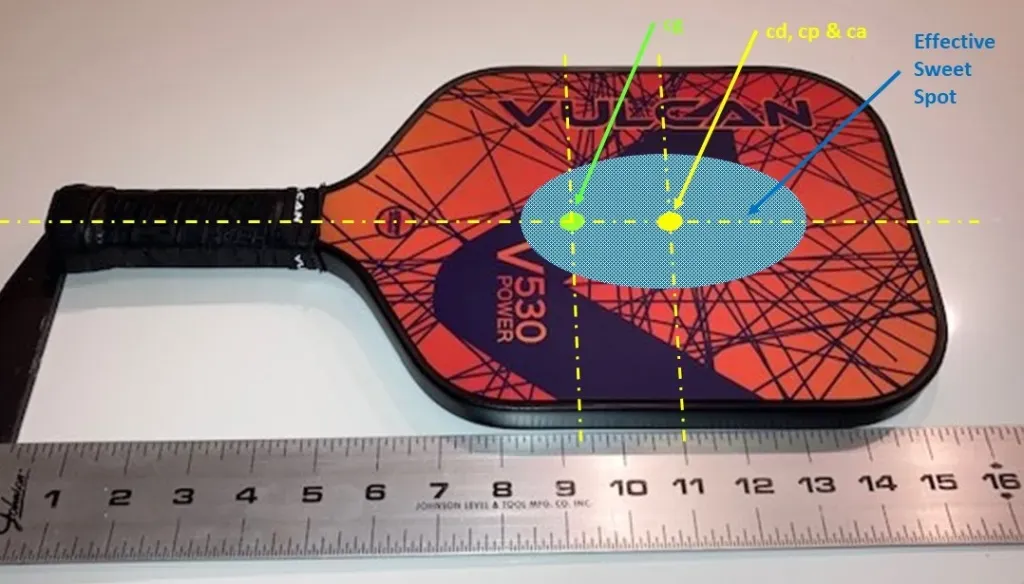
- Larger Usable Sweet Spot: Game analytics indicate that players experience fewer mishits, promoting confidence in execution.
- Consistency through expanded hitting areas reduces errors during gameplay, resulting in greater accuracy.
Understanding how this feature might align with your playing style can prove beneficial in your decision-making.
Budget
Budget considerations play a pivotal role in the purchasing process. As edgeless paddles often carry premium prices, be prepared to shop responsibly.
- Assess quality-to-price ratios carefully; high-end paddles may promise longevity but require significant initial investment.
- Comparatively, consider mid-range options that offer great performance without compromising your bank account.
Shopping with budget efficacy ensures players obtain the right paddle suited for their performance goals.
USAPA Approval
If you're aiming to compete in tournaments, ensure that your selected paddle is USAPA approved. This designation signifies that the paddle meets the established standards for competitive play.
The approval process involves rigorous testing; paddles that carry the seal have shown adherence to the criteria expected for professional competition.
Prioritizing this approval can save potential issues during competitive play, allowing for smooth transitions on the court.
Your Playing Style and Skill Level
Understanding personal playstyle and skill level can drastically affect paddle choice.
- Aggressive Play: Players focusing on power should consider edgeless options that offer wider sweet spots and power-oriented designs for maximum reach.
- Control-Oriented Play: For finesse players, paddles designed for soft shots with enhanced tactile feedback will deliver better shot execution.
- Skill Levels: Beginners should opt for lightweight paddles that enhance control, while advanced players may seek equipment tailored for performance maximization and spin control.
Matching paddles to playstyle ensures effective development and ongoing enhancement throughout gameplay dynamics.
Transitioning to an Edgeless Paddle: Tips for Players Making the Switch
Making a transition to an edgeless paddle can present an opportunity to elevate your game significantly, but it may require personal adjustments for optimal play.
- Start with Practice Sessions: Dedicate initial practice sessions to familiarizing yourself with the feel of the paddle, especially if switching from traditional designs. Begin focusing on control and placement over pure power; this method will aid in adaptation.
- Adjust Your Grip: The absence of an edge guard necessitates potential grip adjustments. Due to a larger hitting surface, consider experimenting with hand positioning until an optimal sweet spot is established.
- Pay Attention to Angles: Be aware of how the angle at which you strike the ball changes with an edgeless paddle. Explore variations in angles to master your desired spin and control, which may take time to refine.
- Mindfulness on Shots: Maintain a focus on your technique and control, as more delicate shots may not yield favorable results initially. Continuous practice will build muscle memory as you grow accustomed to the edgeless design.
Following these tips can ease your transition while maximizing performance as you discover the hidden potentials of edgeless paddles effectively.
Maintaining Your Edgeless Pickleball Paddle for Longevity
To ensure your edgeless paddle remains in optimal condition over time, consider implementing the following maintenance best practices:
- Regular Cleaning: After each session, wipe your paddle with a soft cloth and mild soap to rid it of dirt and oils. Avoid abrasive cleaners that can scratch the surface and reduce performance capability.
- Proper Storage: Store your paddle in a cool, dry area away from extreme temperatures that could warp the frame. Adding a protective cover can prevent accidental scratches or damage.
- Grip Replacement: Periodically check your grip and replace it if it shows signs of wear. A solid grip ensures optimal control during gameplay.
- Avoid Hard Surface Contact: The vulnerable nature of edgeless paddles means that players must be cautious to prevent hard impacts. Consider using protective edge tape if you frequently play near rougher surfaces.
- Routine Check-Ups: Make a habit of inspecting your paddle regularly for chips, cracks, or signs of wear, enabling early identification of potential issues before they affect performance.
Implementing a conscientious maintenance routine prolongs the life of your edgeless pickleball paddle while protecting your investment.
Conclusion
The emergence of edgeless pickleball paddles signifies a revolutionary step forward in sports equipment design, providing players with enhanced performance and flexibility on the court. With their larger hitting surfaces, improved maneuverability, and modern aesthetics, edgeless paddles offer an attractive choice for players at all levels. However, it's vital to weigh potential drawbacks, such as durability concerns and early damage related to their designs, while maintaining diligence in care and selection. By choosing the right edgeless paddle suited to your playing style, you can maximize your potential in the sport, enhancing both enjoyment and competitive prowess. As you explore edgeless options, the latest information and insights shared here will guide you in making this lively transition, leading to notable performance enhancements in your pickleball journey.
FAQs
As you consider your journey into the world of edgeless pickleball paddles, a few common queries tend to arise. This section aims to elucidate frequently asked questions, addressing those uncertainties that may surface during your decision-making process regarding adaptive shifts in paddles.
Are Edgeless Paddles More Likely to Break?
While edgeless paddles do present a higher risk of cosmetic damage due to their design, the overall build quality is more critical in determining durability. Many edgeless paddles are made from high-quality materials, and while they may chip more easily, catastrophic failures primarily depend on overall craftsmanship rather than just the edge design. Thus, handling care remains paramount in prolonging paddle life.
Does "Edgeless" Mean There is Absolutely Nothing on the Edge?
The term "edgeless" primarily indicates the absence of a thick, separate edge guard around the paddle. However, most edgeless paddles still have some form of edge, often reinforced or sealed, to maintain structural integrity while giving a seamless appearance that enhances play by maximizing contact area.
What are the Main Performance Benefits Players Seek from Edgeless Paddles?
Players generally seek performance enhancements such as a larger effective sweet spot, improved consistency on hits, and added control during play. Edgeless paddles deliver these enhanced features, allowing meticulous touch and precision as players navigate their games.
How Does the Sweet Spot Feel Different Near the Edge on an Edgeless Paddle vs. One with a Guard?
The sweet spot on an edgeless paddle tends to provide a more dynamic "live" feel when the ball contacts near the edges. Players often experience a noticeable change in trajectory when using an edged paddle the edge guard tends to pitch the ball more predictably, while on an edgeless paddle, the lack of guard means that the ball can dramatically change course, especially if contact is made near the edge.
This responsive nature of edgeless paddles invites advanced players to embrace challenges; however, beginners may find the experience less forgiving during initial plays. Understanding and adapting to these differences can empower players toward improved performance and control on the court.




























